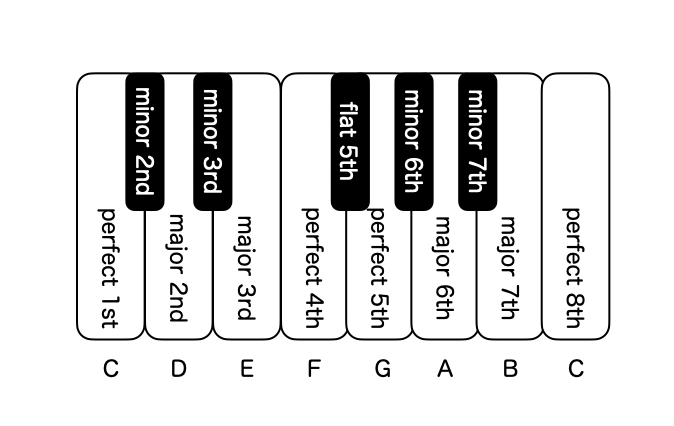A sound height is determined by its frequency. The higher the frequency, the higher the sound. For example, 440 Hz, which is often used in tuners, is a A note; 880 Hz, which is twice the frequency, is also a A note, but an octave higher. 660 Hz, which is 1.5 times the frequency, is a E note. As we will see later, the note at 1.5 times the frequency is five degrees higher.
As you can see, one note from another will sound different depending on the ratio of their frequencies. The pitch indicates how far apart the two notes are, and their harmonics depends on this distance.
The intervals have names, and there are 12 different notes between octaves. It’s easy to understand if you think of a piano keyboard. There are seven white keys and five black keys, totally 12 keys in a octave.

Each note has a name that indicates how far it is from the note of C. In simple terms, there are about seven different notes in this octave that are often used in scales, so we call them 1-7 degrees. There are two types of notes in each octave, minor and major, but the 4th and 5th degrees are called “perfect 4th” and “perfect 5th”.
The F# is called “flat 5th,” which is one degree less than the perfect fifth. It is also sometimes called “augmented 4th”, which is one more degree than perfect 4th. Also, the G# is sometimes called “augmented 5th”, which is one degree more than the perfect fifth.
The pitch notation is important for learning which notes and which notes are used to make a chord or a scale, so it is useful to keep it in mind.